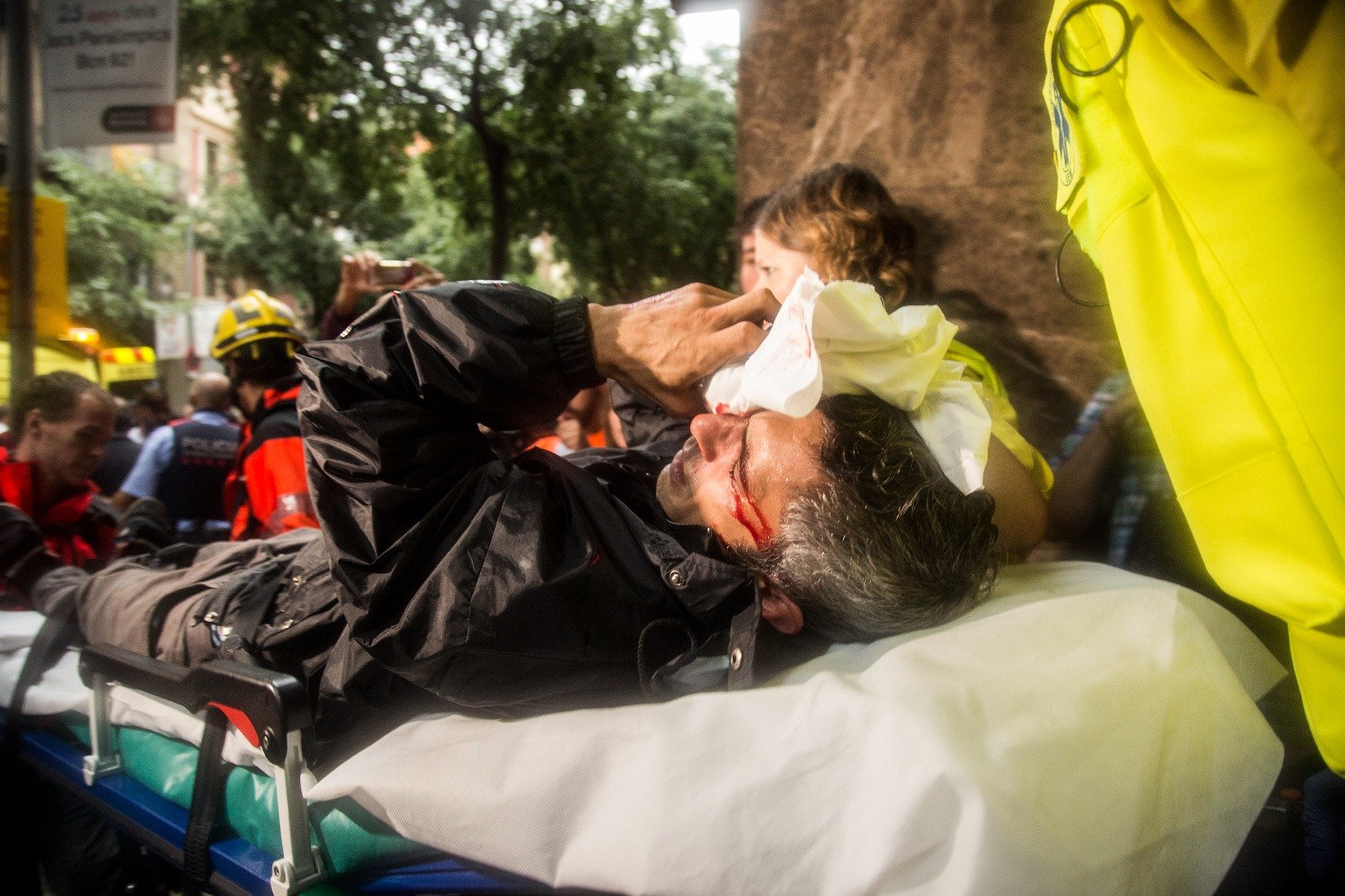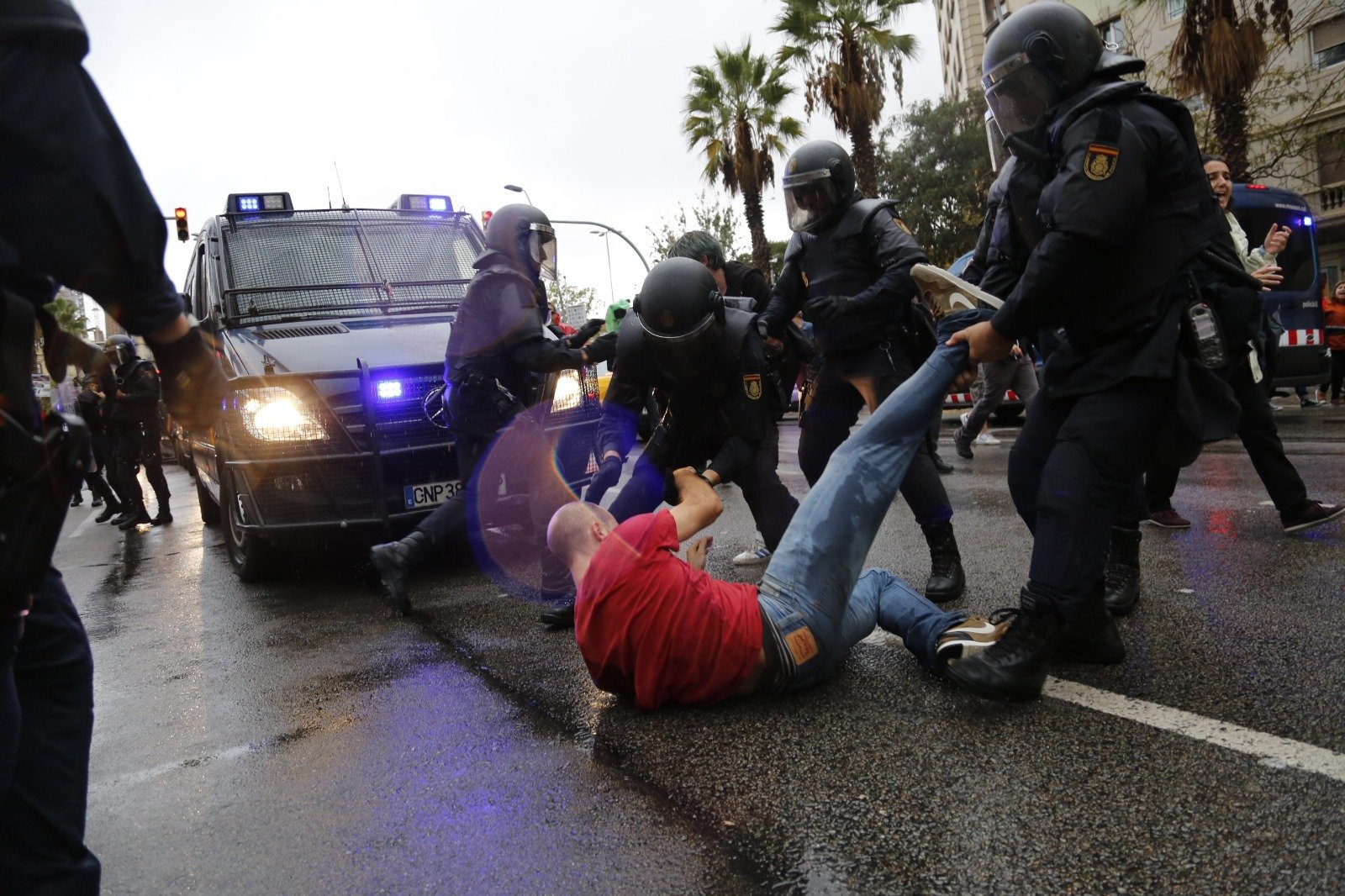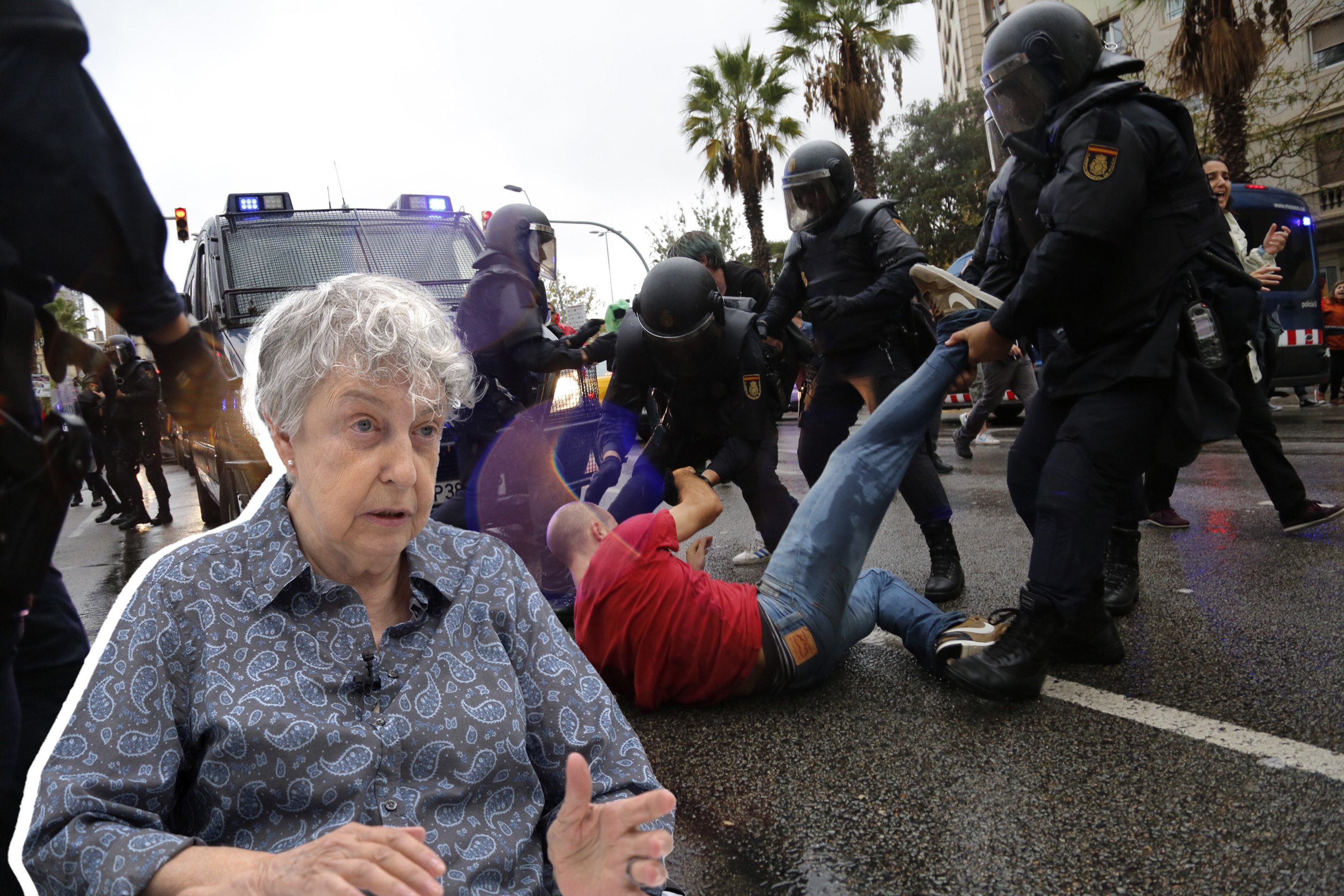A scientific study has revealed new details and patterns among the injuries that the violence of the Spanish National Police and the Civil Guard caused to more than a thousand Catalans taking part in the independence referendum of October 1st, 2017. Dr Núria Pujol-Moix, professor emeritus of the Autonomous University of Barcelona (UAB), has shown the true extent of the police brutality on October 1st, analyzing the injuries inflicted on 1,066 people by police who beat them with batons, kicked people, threw them to the ground, or dragged them by the hair, neck, or ears, among other practices. The several thousand Spanish police officers who had been sent to Catalonia to stop the self-determination referendum failed in their mission, but were the perpetrators of seven serious injuries, as well as fractures, muscle and tendon injuries, contusions, and more. One of the eye-opening statistics noted in the study was that 34 people suffered craniocerebral traumas, in which the brain of the victim is affected due to heavy blows or shaking. This caused dozens of people to suffer impaired language and perception. "As well, 80 percent of the police actions breached the protocol that permits them to inflict one or two baton blows to a person's legs or buttocks", says Pujol-Moix. Thus, in 8 out of 10 cases, on October 1st, 2017, Spanish police beat citizens above the waist (outside the authorized zone) and putting people's vital organs at risk. The doctor also made the point that there were large numbers of people who suffered multiple injuries - they had been hit several times.
A heart attack in response to the emotional impact in Lleida
Dr Pujol-Moix described how the study originated and then was effectively blocked: "On TV I saw many elderly people injured and as a doctor I was very curious to know more details about the injuries caused by the National Police and the Civil Guard. I contacted the Catalan Health Service and they gave me data. However, when I was in the middle of collecting the data, the Article 155 was imposed [handing direct rule of all Catalan government institutions to Madrid] and they did not want to give me any more information, because, as they told me, every little detail was checked and could not give me anything." Pujol-Moix differentiates between physical injuries (998 in total) and psychological or emotional injuries (68). "The wounds defined as of emotional impact were not, however, all psychological, because, for example, there was a man from Lleida who suffered a heart attack, through an emotional impact with physical repercussions. Many people suffered hypertension crises, arrhythmias and there was another person who was saved with a defibrillator," adds the professor emeritus.
The study's breakdown of the injuries by type and age group goes like: 998 people suffered physical injuries, 700 were men and 292 women. By age groups, there was one person under 12 physically injured, 30 aged from 12 to 18, 879 aged from 19 to 65. There were 65 people aged from 66 to 79 physically injured by police and 13 older than 79 years (10 men and 3 women). Of the 68 psychological injuries, one person was under 12, there were 36 injured in the 19-65 age group; 20 aged 66-79, and 11 over the age of 79 - in the psychological category women were in the majority.

More people injured in less populated areas
In Barcelona, Tarragona and Central Catalonia, fewer people were injured in proportion to the population of these areas. On the other hand, in the southern Terres de l'Ebre, four times as many people were injured in proportion to the population there. In Girona, Lleida and the Pyrenees they injured twice as many in proportion to the population. "The voting centres that were less protected by the Fire Brigade and the local police were attacked more than the larger schools. Seven people were seriously injured: the man who suffered a heart attack in Lleida, the one who lost an eye, a another with a very complicated femur fracture... 65 people were injured in the face, which shows the ruthlessness of the police forces," the doctor emphasizes. The professor emeritus clarifies that psychological disorders often show up several days later. On 1st October, it might have seemed to many people that they had just got a little nervous or scared, but that was it. In many cases, after a fortnight, they began to be affected by psychological consequences.
Only 12 police officers received medical attention for minimal issues
Dr Pujol-Moix also analyzed the police officers' injuries. "The first reports said that they had injured 400 policemen, then they reduced that figure to 93, but it turns out that of those 93 the only injuries specified were those suffered by seven police officers. The Catalan Health Service assures that only 12 police officers were treated and they all had minimal issues," says the doctor.

Why was the use of force massive and indiscriminate?
Dr Pujol-Moix explains that the situation on the day of the referendum was not like that of a protest march. "At a demonstration, injuries can occur, because someone might be burning a container, but here people were doing nothing. Why did the police injure so many elderly people and children? Why were there multiple traumas and, in many cases, in the face? Why were there craniocerebral traumas and serious injuries? The code of the National Police establishes basic principles of action which say that they must act with absolute political neutrality, impartiality and with a correct and appropriate treatment of the public and that they can only use weapons in situations where there is a serious risk to their lives or physical integrity or to that of third persons. None of these conditions applied" . The doctor poses all these questions based on the stark reality that her study brings to light.

